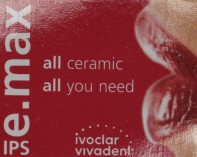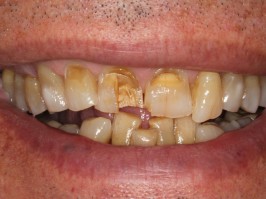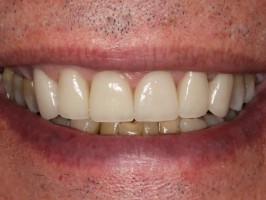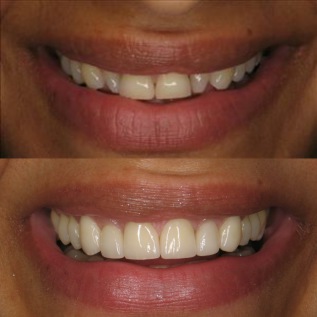Porcelain Materials for Veneers
What materials are porcelain veneers made out of?
Porcelain veneers are typically made out of thin, custom-made shells of porcelain material. The porcelain is a type of ceramic that is valued for its durability, stain resistance, and ability to mimic the look and feel of natural teeth. Porcelain veneers are typically fabricated in a dental laboratory using a mold or impression of the patient's teeth. The porcelain is layered onto the mold and fired in a high-temperature furnace to create a hard, translucent shell that is then bonded to the front surface of the patient's teeth. In recent years, some dental practices have started offering veneers made from composite resin materials as an alternative to porcelain. However, porcelain remains the most popular material for veneers due to its superior durability, lifelike appearance, and resistance to staining.
What is Emax?
Emax is a type of dental ceramic material that is used to create dental restorations, such as crowns, veneers, inlays, and onlays. Emax (made by Ivoclar) stands for "enhanced glass ceramic" and is made from a special blend of lithium disilicate glass and ceramic materials. Emax has become very popular over the past 20 years due to its high strength, durability, and lifelike appearance. It has a translucent quality that allows it to mimic the natural look of teeth, while also being resistant to wear and fracture. In addition to its aesthetic and functional benefits, Emax also has some advantages in terms of ease of use for dentists. It can be milled and shaped using computer-aided design and manufacturing (CAD/CAM) technology, which allows for precise and efficient customization of restorations to fit individual patients' needs.
In this treatment, it's necessary to have a durable material. While Feldspathic Porcelain would look great, it's less likely to hold up to the heavy bite forces the patient has. Emax is a better material for this scenario.
What is Feldspathic Porcelain for Veneers?
Feldspathic porcelain is a type of dental ceramic material that has been used for many years to create porcelain veneers. It is made from a mixture of silica, alumina, and potassium, and has a high translucency and natural-looking appearance. Feldspathic porcelain is known for its ability to mimic the look of natural teeth, particularly in terms of its ability to reflect light and create subtle variations in color. It is also relatively easy to work with, which makes it a popular choice for dentists who want to create custom veneers for their patients. To create feldspathic porcelain veneers, a dental laboratory technician will typically use a mold or impression of the patient's teeth to create a wax-up or mock-up of the veneers. The feldspathic porcelain is then layered and fired in a high-temperature furnace to create a durable and lifelike veneer that can be bonded to the patient's teeth. While feldspathic porcelain has been a popular choice for veneers for many years, some dentists and dental laboratories are now using newer materials, such as lithium disilicate, which offers improved strength and durability. However, feldspathic porcelain remains a reliable and effective option for creating beautiful and natural-looking veneers.
Is Zirconia a good material for porcelain veneers?
Zirconia is a popular dental material that has many applications, but there are better alternatives to zirconia for porcelain veneers.One of the main benefits of zirconia veneers is their strength and durability. Zirconia is a very strong and hard material that is resistant to chipping and cracking, which makes it ideal for use in restorations that need to withstand the forces of chewing and biting. Zirconia is not particularly translucent. It is more opaque than other porcelains. When making veneers, Dr Estafan needs a porcelain that allows it to mimic the natural look of teeth, making Zirconia a poor choice. Additionally, zirconia doesn’t bond to tooth structure like other porcelains can. Zirconia can also be more difficult to work with than traditional porcelain veneers. They require more precise milling and shaping, which can make them more expensive to create. Additionally, because zirconia is a very hard material, it can be challenging to make adjustments or repairs to the veneers once they have been bonded to the teeth. Overall, Zirconia is not a great material for porcelain veneers, However, it is important to discuss your options with Dr Estafan to determine which material is best suited to your individual needs and goals.
Want more info? Check out Dr Estafan's videos on the science of smiling or
some before and after photos of his treatments.






